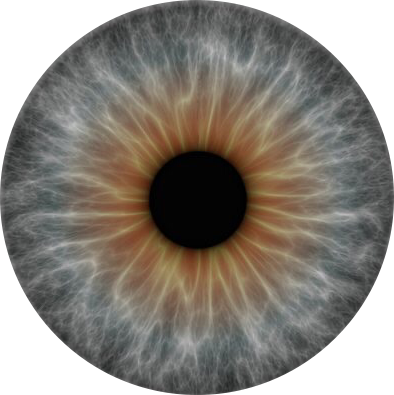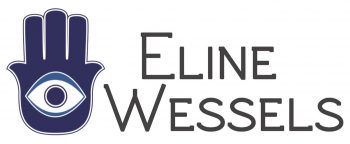Change in a blink of an eye
An IEMT session
During your first session, we go over your intake form together and formulate your goals. Then we sit across from each other and start an introductory exercise with eye movements. We immediately change 1 desired negative feeling. This is how you get acquainted with the questioning protocol and get used to the idea and feeling of getting rid of something negative. The session often consists largely of a short repetitive protocol of questions that I ask you several times on the themes in which you desire change. I work with two types of questioning protocols. One is aimed at reducing negative emotions. The other is focused on making your identity more powerful. I usually combine these in one session.
What do you experience during the session?
After each round of questions, we find a particular memory, or emotion or physical sensation. You can keep those to yourself or you tell them. I immediately neutralize the negative emotion involved by having you make certain eye movements after the question protocol. I do this by asking you to follow my fingers as you think of the memory.
Searching for the cause at the subconscious level
At the same time, your subconscious brain helps to detect all previous memories with the same emotion as well, so that these too can be processed immediately. Sometimes a forgotten memory may come up. Or you suddenly experience a different emotion than what you originally started with in the session. Then we go through the questioning protocol again and neutralize these “new” negative emotions as well. Ultimately, we are looking for the very first memory in which you experienced the taxing emotion. This is the origin of your pattern.

How long does it take to change something?
With young, simple emotional patterns, this process may consist of a few such “rounds of questions. But in general, one theme to be worked out needs about ten such rounds of questions to solve. It depends a bit on whether you can easily get in touch with your feelings and whether you take medication to inhibit emotions.
Working in trajectories
For long-term results, I now work only with pathways, not single sessions. This requires commitment from a client to not just “clean up some emotions,” which sometimes is already very nice. But I find it even more important to also reverse underlying negative beliefs about yourself and debunk profound effects on your identity. Only in this way will you benefit from IEMT structurally, for the rest of your life. And I think that’s important.
After a telephone introduction and an intake process, I will suggest a course of action to achieve your goals. The shortest course for adults is 6 sessions. The longer course consists of 10 sessions. Children up to 12 yr can often get by with about half this number.
An ideal trajectory develops from coming in with “sad tears” and leaving with “happy tears” and feeling enlightened, energized and meaningful about your life, now and your future. That your conviction and confidence in this feels strong and you know – and are amazed – that there is more in you than you initially thought.


SEND ME a Whatsapp message:

Change in a blink of an eye
An IEMT session
During your first session, we go over your intake form together and formulate your goals. Then we sit across from each other and start an introductory exercise with eye movements. We immediately change 1 desired negative feeling. This is how you get acquainted with the questioning protocol and get used to the idea and feeling of getting rid of something negative. The session often consists largely of a short repetitive protocol of questions that I ask you several times on the themes in which you desire change. I work with two types of questioning protocols. One is aimed at reducing negative emotions. The other is focused on making your identity more powerful. I usually combine these in one session.
What do you experience during the session?
After each round of questions, we find a particular memory, or emotion or physical sensation. You can keep those to yourself or you tell them. I immediately neutralize the negative emotion involved by having you make certain eye movements after the question protocol. I do this by asking you to follow my fingers as you think of the memory.
Searching for the cause at the subconscious level
At the same time, your subconscious brain helps to detect all previous memories with the same emotion as well, so that these too can be processed immediately. Sometimes a forgotten memory may come up. Or you suddenly experience a different emotion than what you originally started with in the session. Then we go through the questioning protocol again and neutralize these "new" negative emotions as well. Ultimately, we are looking for the very first memory in which you experienced the taxing emotion. This is the origin of your pattern.

Searching for the cause at the subconscious level
At the same time, your subconscious brain helps to detect all previous memories with the same emotion as well, so that these too can be processed immediately. Sometimes a forgotten memory may come up. Or you suddenly experience a different emotion than what you originally started with in the session. Then we go through the questioning protocol again and neutralize these "new" negative emotions as well.
Ultimately, we are looking for the very first memory in which you experienced the taxing emotion. This is the origin of your pattern.


How long does it take to change something?
With young, simple emotional patterns, this process may consist of a few such "rounds of questions. But in general, one theme to be worked out needs about ten such rounds of questions to solve. It kind of depends on whether you can easily connect with your feelings.
How many sessions are needed?
Sometimes during the session it turns out that there is a tough, deep-seated pattern, which turns out to be more complex than previously visible. Often then the identity is also partially disrupted by what has occurred. In that case, several follow-up sessions are needed to (a) get to the core and (b) clear all negative, related patterns. As a rule, you can notice a big difference with just 3 to 5 sessions. With smaller children (under 12 yr old), this is also often enough.
Working in trajectories
For long-term results, since this year I have been working only with pathways, not single sessions. This requires commitment from a client to not just "clean up some emotions," which sometimes is already very nice. But I find it even more important to also reverse underlying negative beliefs about yourself and debunk profound effects on your identity. Only in this way will you benefit from IEMT structurally, for the rest of your life. And I think that's important.
After a telephone introduction and an intake process, I will suggest a course of action to achieve your goals. The shortest course for adults is 6 sessions. The longer course consists of 10 sessions. Children up to 12 yr can often get by with about half this number.
An ideal trajectory develops from coming in with "sad tears" and leaving with "happy tears" and feeling enlightened, energized and meaningful about your life, now and your future. That your conviction and confidence in this feels strong and you know - and are amazed - that there is more in you than you initially thought.



